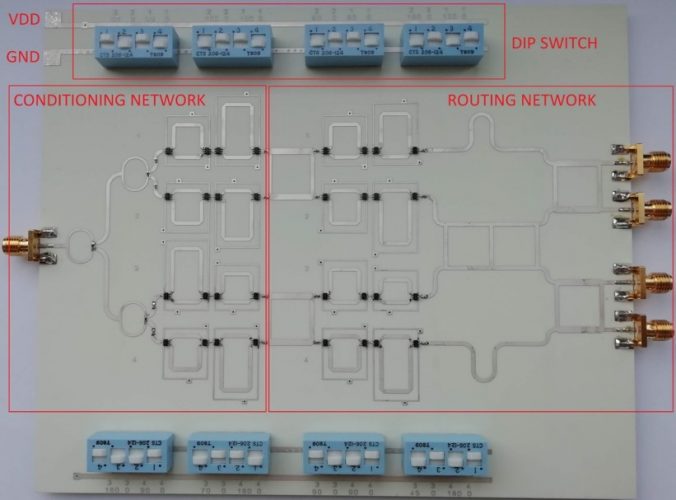
The proposed invention consists of a reconfigurable radio-frequency network, which has one input port are a number of output ports. This network is capable of distributing the radio-frequency input signal arbitrarily among the output ports, while achieving theoretical zero power loss. This goal is achieved by using variable phase shifters, without adding any lossy component. The result is a novel radio-frequency component which can find application in reconfigurable antenna arrays, amplifiers with variable gain, versatile telecommunications and radar front-ends.













